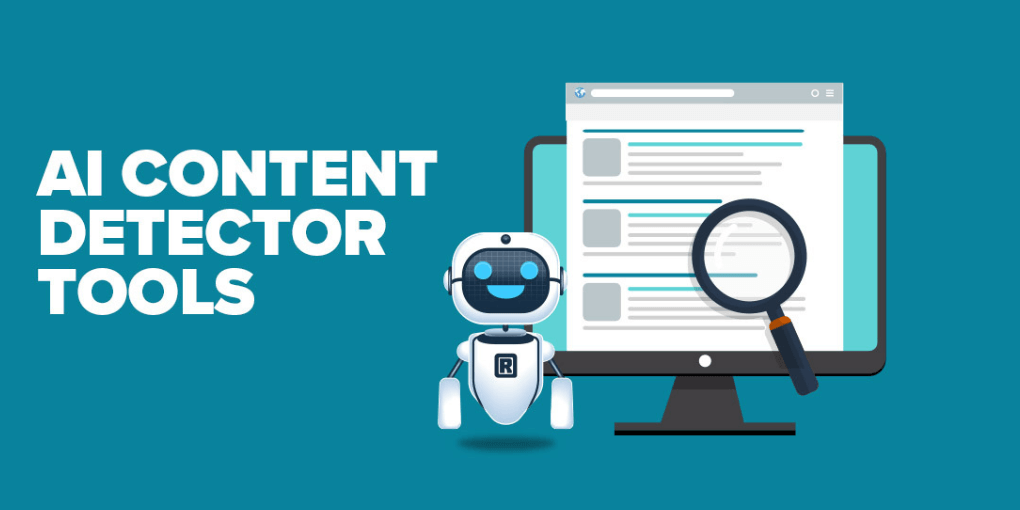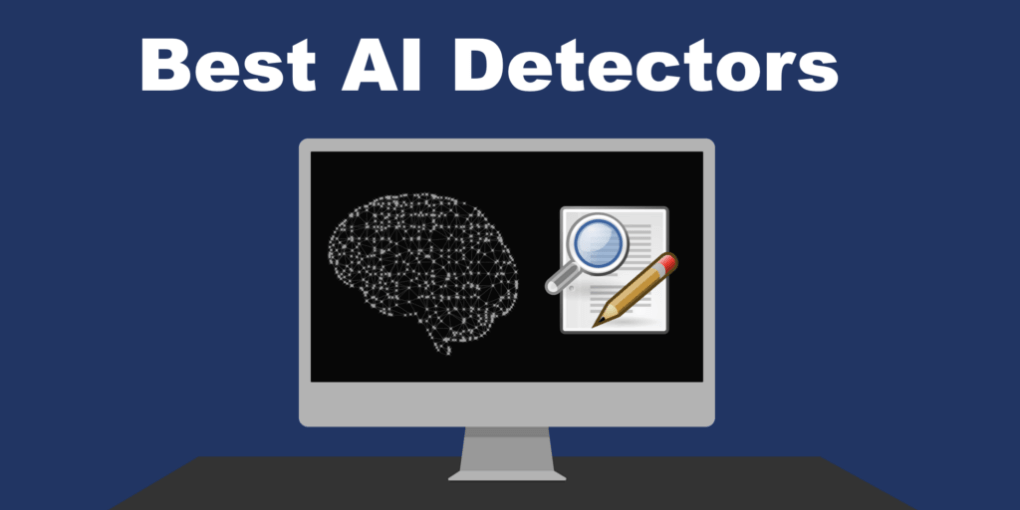
AI writing has become increasingly popular in recent years, with various AI-powered tools and platforms emerging to help writers streamline their work and improve their productivity.
However, along with the rise of AI writing, there has been a growing concern about the authenticity and originality of the content produced.
This has led to the development of AI writing detectors, which are designed to identify and flag content that has been generated by AI systems.
In this article, we will explore the concept of AI writing detectors, their significance, and how they are shaping the future of content creation.
What are AI Writing Detectors?
AI writing detectors are algorithms or systems that are designed to analyze and evaluate written content to determine whether it has been generated by humans or AI systems.
These detectors utilize advanced natural language processing (NLP) techniques and machine learning algorithms to assess various linguistic and stylistic aspects of the text and identify patterns indicative of AI-generated content.
The Significance of AI Writing Detectors
The significance of AI writing detectors lies in their ability to maintain the integrity and quality of written content.
By identifying AI-generated text, these detectors help ensure that the content produced is original, reliable, and free from plagiarism.
They provide a mechanism for content creators, educators, and researchers to detect instances where AI systems are being used to generate content without proper acknowledgment or attribution.
Benefits of AI Writing Detectors
Here are some benefits of AI Writing Detectors:
Preserving Originality
AI writing detectors help protect the integrity of human creativity and originality by identifying instances of AI-generated content.
They ensure that content created by humans is acknowledged and valued for its authenticity.
Ensuring Credibility
By detecting AI-generated content, these detectors contribute to maintaining the credibility and trustworthiness of written material.
Users can have confidence in the content they consume, knowing that it has been produced by human authors.
Preventing Plagiarism
AI writing detectors play a crucial role in preventing plagiarism by identifying content that has been generated by AI systems without proper acknowledgment.
This ensures that credit is given where it is due and encourages ethical writing practices.
Enhancing Content Quality
AI writing detectors encourage content creators to focus on producing high-quality, original content.
By identifying AI-generated text, these detectors motivate writers to improve their skills and deliver valuable content that adds genuine value to readers.
Promoting Fair Competition
With AI writing becoming more prevalent, it is essential to create a level playing field for all writers.
AI writing detectors help to identify and differentiate between content generated by humans and content generated by AI systems, ensuring fair competition among writers.
Time and Resource Efficiency
AI writing detectors enable efficient allocation of time and resources by flagging AI-generated content.
Content creators can focus their efforts on reviewing and editing content that has been created by humans, saving time and ensuring optimal productivity.
Educational Tool
AI writing detectors can be used as educational tools to teach students about the differences between human and AI-generated content.
By analyzing and comparing examples, students can develop critical thinking skills and learn to appreciate the unique qualities of human writing.
Content Verification
AI writing detectors help in verifying the authenticity of written material, particularly in cases where the source of the content is uncertain.
This is especially useful in academic and research settings, where the credibility and accuracy of information are paramount.
Types of Writing Detectors

Writing detectors refer to software or tools that are used to identify and detect various types of writing errors, plagiarism, and other related issues. Here are the types of writing detectors:
- Grammar and Spelling Checkers: Grammar and spelling checkers identify writing errors such as syntax incorrectness, spelling issues, misused words, punctuation faults, and other grammatical errors. These errors may lead to wrong understandings and perceptions of your professional content and quality.
- Plagiarism Detectors: Plagiarism detectors are algorithm-based online tools used to identify content copied from other sources by comparing your content with a bank of content available worldwide. These detectors highlight specific phrases or sentences in your content that are not original and provide directives on how to rewrite such sentences or using correct citations where necessary.
- Style Checkers: Style checkers analyse sentence length, structure, tone, and consistency, and are used to optimize readability and deliverability of the information. They detect issues such as difficult-to-understand writing and lengthy, complex sentences and provide recommendations for improvement.
- Writing enhancement tools: Writing enhancement tools are intelligent software that offers style and tone suggestions, indicating conjunction use, Commonly confused words, jargon or a tone that doesn’t match the designated audience or topic. They provide tips on alternatives and paraphrasing suggestions to improve the writing outlook.
- Readability Evaluators: Evaluators are online tool-based platforms that evaluate your writing’s readability, estimate the time it takes to read and provide a score that estimates the reading level of intended audiences. This information enables writers to adjust text complexity and readability and target specific groups/regions and psychographic profiles.
Accuracy of Writing Detectors
The accuracy of writing detectors depends on the nature of the error they detect and the robustness of the algorithms by which they operate.
Some detectors are more precise than others, depending on the complexity of the errors detected. Here are some factors determining the accuracy of writing detectors:
- The nature of writing errors: Writing detectors can detect various writing errors ranging from grammar and spelling errors to plagiarism and readability evaluation, commonly referred to as the “4Rs” or “Readability, Relevance, Relatability, and Reputation.” While some errors may be easier to detect, others may provide a more complex challenge in the world of writing detection.
- Algorithm and Machine Learning Models: Writing detectors operate with Artificial Intelligence systems and machine learning models that determine their accuracy rates. Advanced algorithms with deep learning models are generally more accurate in identifying errors since they can draw from vast data sources to identify inaccuracies and inconsistencies in written content.
- Type of Writing: Writing detectors come with different levels of accuracy concerning the writing genre. Some tools are more robust in particular industries such as scientific or academic writing, while others are more generalized for casual, creative writing formats.
- Human review of machine output: Integrating human-led reviews and editing sessions enhances writing detector accuracy as verifiers may identify potential errors that automated detectors may not catch.
How AI Writing Detectors Work
AI writing detectors are software programs that use complex Natural Language Processing (NLP) algorithms and Machine Learning (ML) models to analyze the text and identify errors in writing. Here’s how AI writing detectors work:
- First, the text is analyzed for basic writing problems, such as spelling errors, capitalization faults and punctuation mistakes. The detectors check to spell against online dictionaries and other writing-style guides.
- Grammar analysis comes next. The detectors use syntax trees and rule-based models to identify grammatical errors that include subject-verb agreement, fragments, dangling modifiers, and verb tense issues that are often hard to detect.
- Some AI writing detectors are designed to check for plagiarism by scanning through various sources and comparing your text against that database for similarities. The detection of textual similarities, if present, may lead to suggestions to alter the content and also provide citations or references.
- AI writing detectors can assist in style analysis, checking for repetitive words or phrases, readability level, and logical coherence. The tool will make the necessary adjustments based on the analysis results in guiding the writer in the direction directed for improved content delivery.
- AI writing detectors may also suggest possible alterations and paraphrased suggestions to correct writing style inconsistencies, and fundamental writer errors, such as verbosity or atypical renditions of the chosen audience tone and language nuances.
- Reports are generated once the detector algorithms finalize reviewing the content, highlighting areas requiring editing. The erroneous text is highlighted and color-coded with suggested corrections available for a quick update.
Future of Writing Detectors
The future of writing detectors is bright and promising, with rapid technological advancements in machine learning and artificial intelligence.

It is envisaged that they will continue to increase in complexity, incorporating newer features and algorithms aimed at optimizing writing errors and content performance in diverse places.
Here are some potential future developments in writing detectors:
- Enhanced precision: As machine learning models continue to improve, detectors will increase their accuracy rates, allowing for the identification of more sophisticated errors related to writing style, composition, and tone consistency.
- Multi-Language Detection: In response to demands for the internationalization of business deals in recent times, writing detectors will have to become more proficient in detecting errors across multiple languages to ensure accuracy, and inclusivity and avoid culture-laden mistakes.
- Integrate audiovisual formats: Writing detectors will have to advance with the current trends in media by detecting errors or discrepancies in audiovisual formats such as audiobooks, webinars, and podcasts.
- Cognitive Analysis Integration: Writing detectors will integrate machine learning algorithms for cognitive analysis, enabling the detection of more nuanced writing errors, such as sarcasm and humor, and more complex sentence structures.
- Interconnectivity with various areas of content creation processes: Writing detectors will converge with other software applications such as content management systems, graphics, and multimedia platforms to provide a fully integrated solution for content creation and deployment.
Conclusion
AI writing detectors serve as essential tools in the evolving landscape of written content. They play a crucial role in preserving originality, ensuring credibility, preventing plagiarism, and enhancing the overall quality of written material.
As AI technologies continue to advance, these detectors will adapt and improve, providing more accurate and sophisticated means of identifying AI-generated content.
The future of writing detectors holds exciting possibilities, with advancements in deep learning models, multimodal analysis, real-time detection, and customizable settings.
These advancements will empower writers, educators, and content platforms to maintain authenticity, make informed decisions, and foster fair competition in the realm of written content.
By leveraging the power of artificial intelligence and natural language processing, writing detectors will continue to evolve, keeping pace with emerging AI writing technologies.
They will support content creators in producing valuable and original content, while also ensuring that AI-generated content is appropriately acknowledged.

This blog post is written by AI Genie, Powered by ContentGeni’s cutting-edge AI technology. It is able to quickly and efficiently produce high-quality written content on a wide range of topics. While AI Genie may not have a physical body, it is constantly learning and evolving to provide the best possible content for its readers.